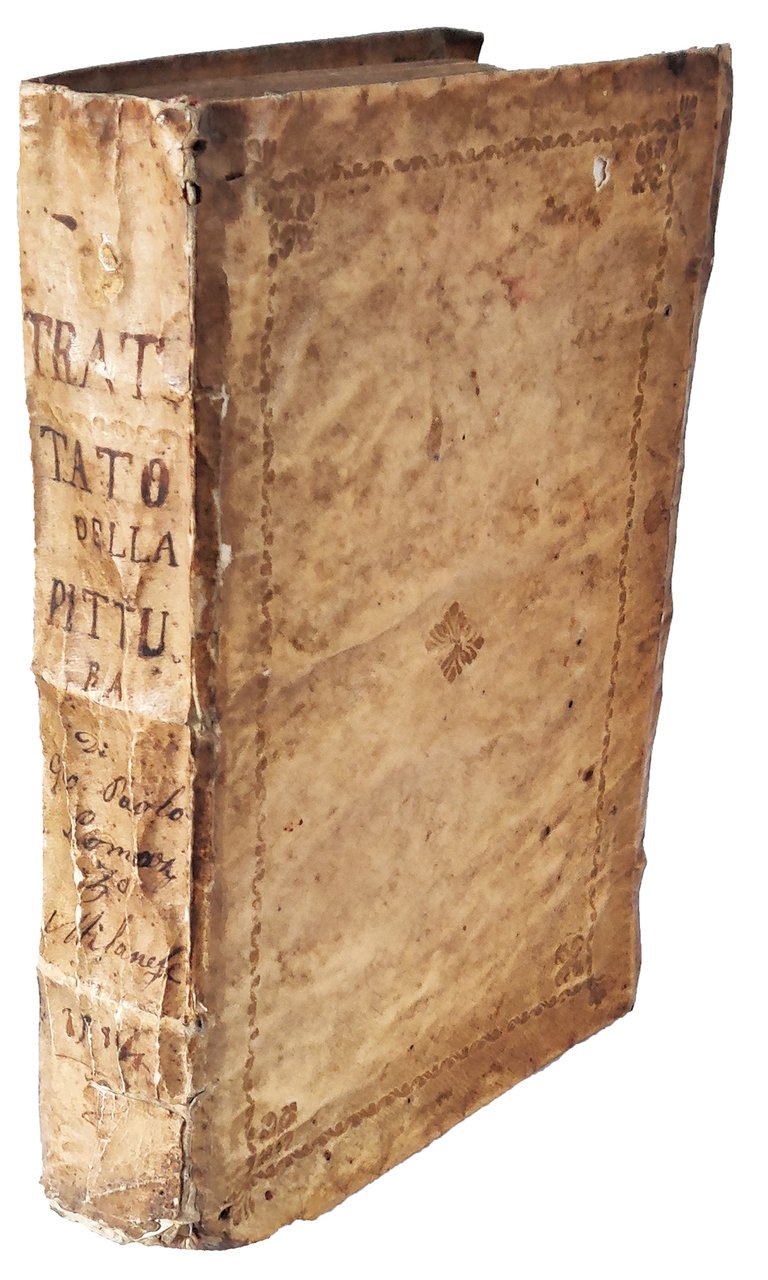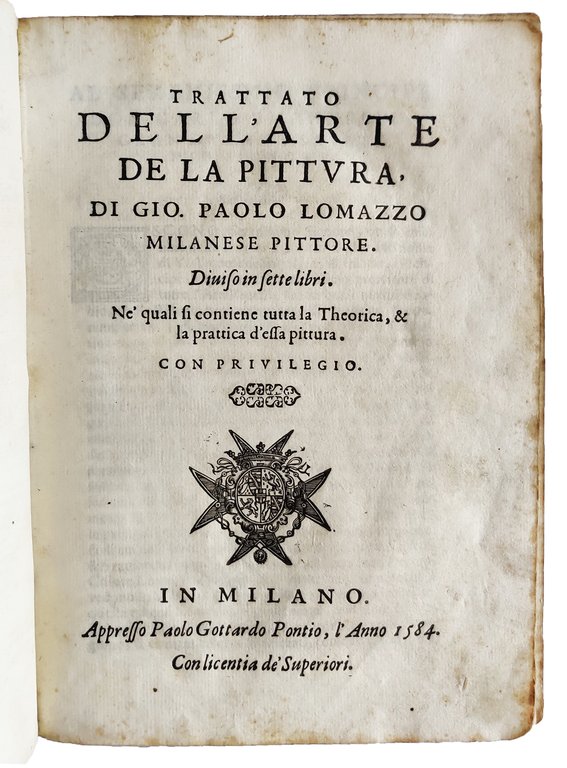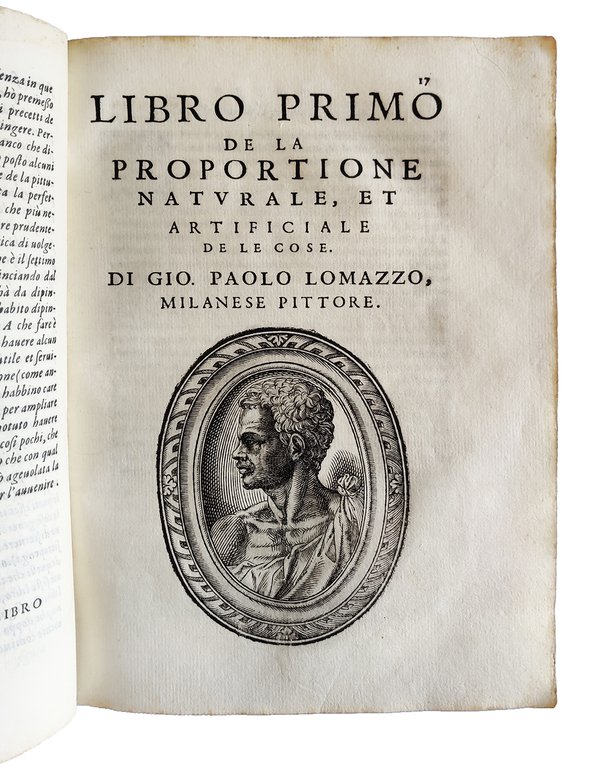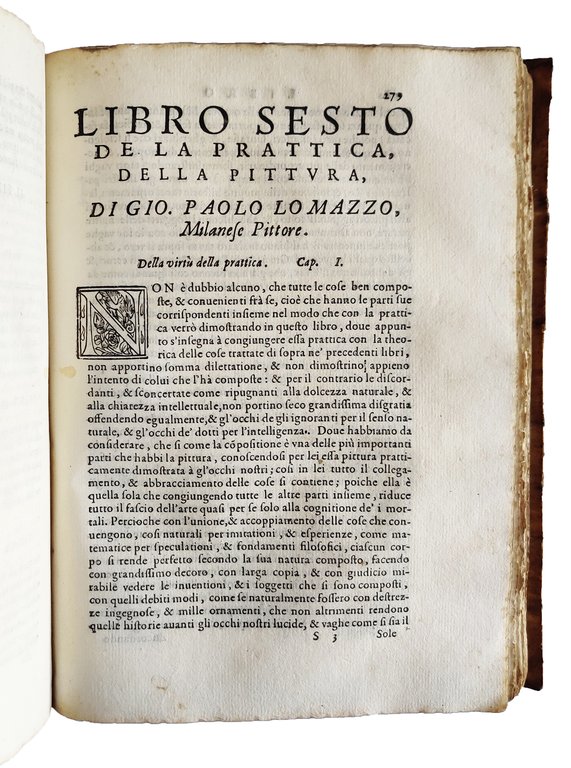



Libros antiguos y modernos
LOMAZZO, Giovanni Paolo (1538-1592)
Trattato dell'arte de la pittura, di Gio. Paolo Lomazzo milanese pittore. Diviso in sette libri. Ne' quali si contiene tutta la theorica, & la prattica d'essa pittura
Milano, Paolo Gottardo da Ponte, 1584
5800,00 €
Govi Libreria Antiquaria
(Modena, Italia)
Los gastos de envío correctos se calculan una vez añadida la dirección de envío durante la creación del pedido. El vendedor puede elegir uno o varios métodos de envío: standard, express, economy o in store pick-up.
Condiciones de envío de la Librería:
Para los productos con un precio superior a 300 euros, es posible solicitar un plan de pago a plazos al Maremagnum. El pago puede efectuarse con Carta del Docente, Carta della cultura giovani e del merito, Administración Pública.
Los plazos de entrega se estiman en función de los plazos de envío de la librería y del transportista. En caso de retención aduanera, pueden producirse retrasos en la entrega. Los posibles gastos de aduana corren a cargo del destinatario.
Pulsa para saber másFormas de Pago
- PayPal
- Tarjeta de crédito
- Transferencia Bancaria
-
-
Descubre cómo utilizar
tu Carta del Docente -
Descubre cómo utilizar
tu Carta della cultura giovani e del merito
Detalles
Descripción
4to (216x155 mm). [40], 700 [i.e. 698], [6] pp. Pages 693-694 omitted in pagination. Collation: †8 ††12 A-Vv8 Xx6 [χ]2. On title page woodcut coat-of-arms of the Savoy family, as the edition is dedicated by the author to Charles Emmanuel I, Duke of Savoy, from Milan on June 23, 1584. Woodcut oval portrait of the author on l. B1r. Woodcut decorative initials and ornaments. Roman and italic type. Errata, register and colophon on l. Xx6. Contemporary gilt vellum with overlapping edges, spine in four compartments each decorated with a gilt fleuron, inked title on spine, panels within a gilt frame with gilt corner pieces and a central fleuron, gilt and gauffered edges (lacking ties, stained and a bit darkened, small repair to the bottom of the spine, two small holes on the panels). Some marginal foxing, large staining to the last 15 leaves, small loss of paper to the lower outer corner of l. Dd3 with no loss, all in all a very good, genuine copy in an nice contemporary binding.
FIRST EDITION, first issue (a second issue appeared in 1585 with a reset title page), in the rare variant B with the addition of a final bifolium ([χ]2) containing an additional chapter to be placed after chapter 16 at p. 328 (Questo capitolo và collocato nel sesto libro doppo il capitolo 16. à car. 328).
Lomazzo's Trattato is considered as a milestone in early Mannerist art theory and a main source for the reception and circulation of Leonardo's works. Lomazzo, who was a member of the artistic Accademia della Val di Blenio, firmly belonged to the Milan Counter-Reformation environment dominated culturally by the figure of St. Carlo Borromeo and artistically by the legacy of Leonardo da Vinci.
“His Trattato dell'Arte della Pittura (1584) along with the later Idea del Tempio della Pittura (1590), constitutes one of the most complete attempts to give a defined structure to the art of painting […] A complex book such as the Trattato had the ambitious aim of summing up the ideas and notions of the different parts of painting (proportion, movement, color, light and perspective) and of positioning the art of painting in its rightful place among the liberal arts. It could not have seen the light unless the cultural climate in Milan during the sixteenth century had been favorable. The Trattato, which was published in Milan in 1584 by Paolo Gottardo Pontio (or da Ponte), is divided into seven books. The first five books deal with the different elements of painting [‘On the Natural and Artificial Proportion of Things', ‘On Movement', ‘On Color', ‘On Light', and ‘On Perspective'], while the last two books are called ‘The Practice of Painting' and ‘On the History of Painting'. The division of the book will serve as example for other Italian writings on art of the period, such as Armenini's De' Veri Precetti della Pittura, which was published only three years after the ‘Treatise' and whose second book is mainly divided into light, shadows, foreshortenings, color, and storie. On the other hand, it differs from the traditional “dialogue” form adopted by previous writers on art, such as Paolo Pino's Dialogo della Pittura (1548) or Dolce's Aretino (1557). The dialogue form was used by Lomazzo only for the Libro de' Sogni. The planning of the book was affected by Lomazzo's progressive eye-illness. He rearranged the chapters several times, adding new sections almost certainly with the help of different people, but, as Ackerman pointed out, he was likely unable to rewrite the older ones. There is still discussion on the issue of who helped him to structure the books (both the ‘Treatise' and the Idea). I tend to believe that, among others, he was assisted by the literate Giuliano Goselini and Bernardino Baldini, the authors of the two sonnets at the beginning of the book, whom Lomazzo knew thanks to his participation in the Blenio academy. Although they were probably not ‘editors' or practical he

